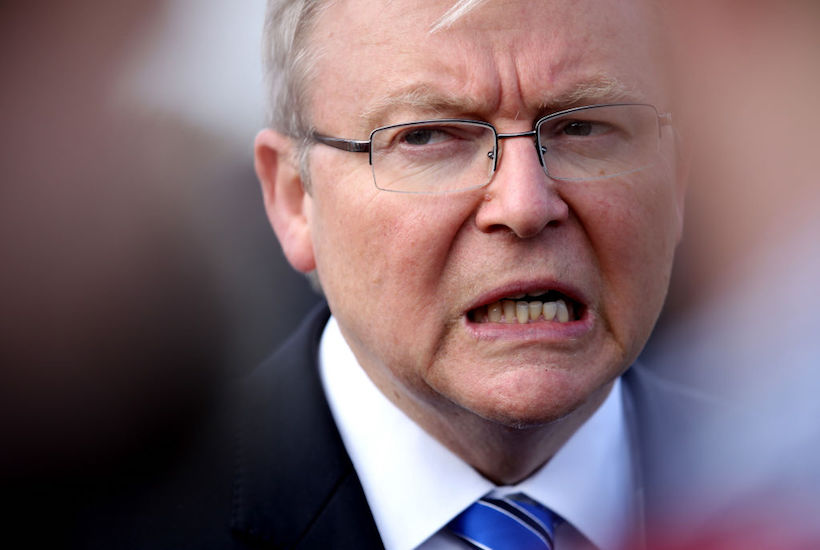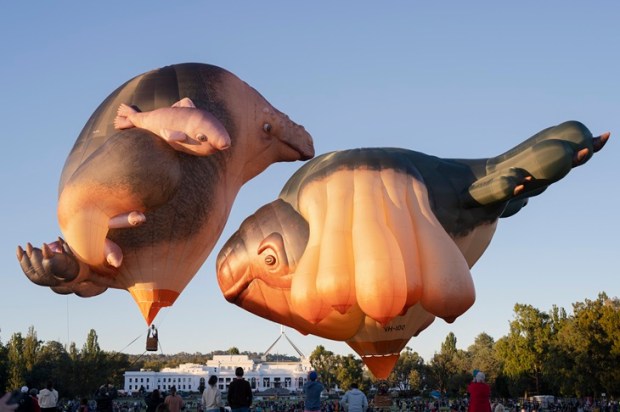When the Prime Minister and Treasurer appointed Stephen Kennedy as the Treasury Secretary, they opted for a bureaucrat who had been the architect of Turnbull’s potentially disastrous carbon tax. They would also have known him to have been a senior adviser on Kevin Rudd’s exorbitant spendathon following the 2008 global financial crisis.
Unsurprisingly, the Secretary of the Treasury recommended that the government implement a “Full Rudd” coronavirus program, suggesting the British approach was insufficiently stimulatory. Ministers need little encouragement to embark on spending sprees but in times past Treasury used to be a brake on their ambitions.
Australia’s spending now totals $320 billion. At 14 per cent of GDP this is a magnitude similar to that of the UK program, though larger than that of the US at least fivefold that of Japan, Canada, Korea, Norway or New Zealand.
Commonwealth spending programs go well beyond maintaining the nation’s businesses and sustaining those who are unemployed and extends into Keynesian economic stimulus territory. The stimulus effect will be ineffective but the resultant debt will be a Sword of Damocles hanging over the economy, squeezing the availability of investment funds for decades. We will likely emerge with a permanently enlarged government share of the economy and its corollary of a lasting reduction in economic growth.
But there is a way of avoiding this. Converting Australia’s fabulous natural wealth into real incomes has been impaired by decades of regulatory impediments thrown up by governments mainly targeting the chimera of a green nirvana. The nine years delay and hundreds of millions of dollars that the successive green objections to the Adani coal mine is one testimony to the effects of the barriers in place.
Clearing away this regulatory detritus is essential if we are to get the economy roaring into an income-enhancing growth phase.
As for paying back the $320 billion debt and easing consumer cost impacts, we have the option of rescinding many policies that continue to slug the economy. Three of these comprise terminating green follies that have generated massive excessive costs in Murray-Darling water, the subsidies for renewable energy and the submarine program.
The Murray Darling Basin Plan has reduced farmers’ irrigation water by some 20 per cent. Irrigation water is a basic agricultural input in an area that produced over 35 per cent of the nation’s farm output. The Murray Darling Basin Authority has $3-4 billion of the $13 billion originally allocated to it for buying up water and for water saving engineering measures. Though not cost-beneficial those water saving measures have led to a de facto increased environmental water supply.
The MDBA holds about 2,200 gigalitres of water worth upwards of $3 billion. This should be sold back to farmers. With the cancellation of MDBA’s remaining funds, this would result in a total saving of some $7 billion. It would also bring a massive dividend in restoring the prosperity of the region, while boosting national food production.
Commonwealth spending on energy subsidies are paid either out of taxes or through forced increases in costs to customers. Direct spending through the budget includes that on the “Clean Energy Finance Corporation”, the Australian Renewable Energy Agency, the Clean Energy Regulator, Global Capture and Storage of carbon and CSIRO’s climate and energy work. This comes to over $1.6 billion a year, all of which is wasted, with much having a negative value. In addition, there are the renewable energy requirements which at current prices cost consumers over $2.7 billion a year.
These measures at $4.3 billion a year could be terminated and save some $43 billion over a decade.
Finally, we have the folly the diesel retrofit of the French Barracuda nuclear submarine – a choice designed to prevent greens from going troppo. The intended $50 billion spend has now blown out to $225 billion. Taking the nuclear option or the German Type 216 might save $100 billion over the next 30 years.
These three programs alone can save $150 billion taking us halfway towards eliminating the expenditure levels now in place.
The present economic shock may be the most serious we have ever seen. Even when governments relax restraints on activity, an economic restructuring will be needed to reflect demand changes. This requires a more flexible economy, part of which entails a reduced public sector cost burden. In addition, Australia right now needs a bonfire of the regulatory distortions that were introduced at a time when we thought we could impose such costs. Will a government that has to date proved unable to wind back excessive regulatory spending or resist arguments from its advisers for excessive spending prove capable of such reforms?
Alan Moran is with Regulation Economics. His latest book is Climate Change: Treaties and Policies in the Trump Era.
Got something to add? Join the discussion and comment below.
Got something to add? Join the discussion and comment below.
Get 10 issues for just $10
Subscribe to The Spectator Australia today for the next 10 magazine issues, plus full online access, for just $10.


























Comments
Don't miss out
Join the conversation with other Spectator Australia readers. Subscribe to leave a comment.
SUBSCRIBEAlready a subscriber? Log in